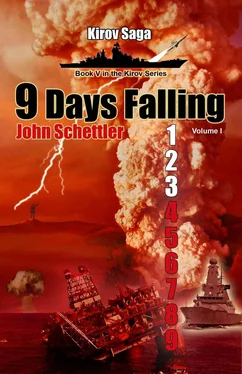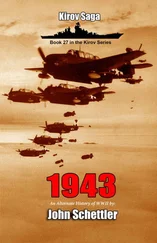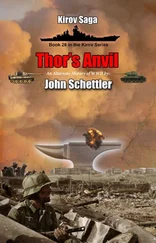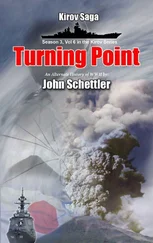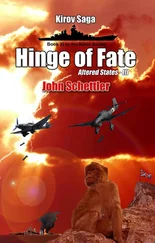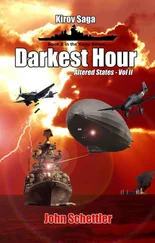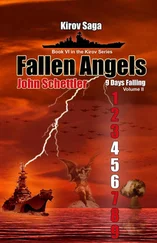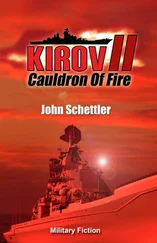~ Luke 15:3-7
“FoxThree, Fox Three! Missiles away!” Lieutenant Peter Tang looked at his flight panel, saw the hostile radar lock warning, and made the decision to fire in a heartbeat—but he was too late. He looked over his shoulder at the other three planes in his subflight and saw their missiles streaking away after his, rocketing into the sky above where the unseen enemy had fingered them with targeting radar. He knew damn well what was coming next.
“Countermeasures!” he yelled into his comm-set. “Break formation and every man for himself!” Then he pulled his F-16 into high G turn, tipped into a dive and poured on the power. So much for breakfast.
Tang was up early that morning, along with all the other pilots in his F-16 squadron. Early mess was at 05:00 hours where he had eaten with his buddy Alex Wu and the newcomer, Kevin Lo. Their Americanized names were all too common in the breakaway Republic, where well over 80% of the population adopted and used English given names. You couldn’t even fill out a job or college entrance exam application in Taiwan without listing your English name these days, but call them what you will, these were the Squadron leaders who would have their butts in the seats on Alert One scramble duty this morning—top of the list.
Tang was operating with the 401st Tactical Fighter Wing out of Hualien AFB on the northeastern coast of Taiwan. His 17th Group Thor was among the best in the service, flying F-16A/B Falcons , and charged with defense of the airspace over Taipei. His good friend, Alex Wu had just made 1st Lieutenant himself and was now assigned to the 27th Black Dragon group along with his new sidekick, Lt. Kevin Lo. They were out in the ready rooms when the first reports came in—missile warning—for they were not the only men of war up early that day.
400 Kilometers to the west, in the hilly inland country stretching from Shantou to Fushou in China, the Dong Feng ballistic missiles were up as well, their red tipped noses rising to meet the dawn. In the year 1232, the Chinese repelled Mongol invaders during the battle of Kai-Keng by using the primitive rockets powered by gunpowder, the first known use of that seemingly magical black powder as a weapon of war. The ‘arrows of flying fire’ had come a long way since then.
By 2021 China had amassed a fearsome ballistic missile arsenal to confront Taiwan. US analysts estimated there were at least 1500 missiles available. There were 1800, and of these 600 DF-11s were deployed for the overture, about 50 improved to extend their range to 825 kilometers. These could strike any target on the Taiwanese mainland, though the bulk of the inventory with shorter 300 kilometer ranges would be used against targets on the eastern shores of the wayward island republic. The DF-11s were largely carried by mobile launch trucks, their engines growling on the coastal hills of mainland China that morning as one battery after another signaled ‘armed and ready.’ 300 were available for launch with in twenty minutes of the order to fire, and the order had finally come.
The first batteries began to launch a little after 07:00 hours on the morning of September 25, the second day of the Great War that the world had nervously been awaiting. Now the political squabbles and pipeline attacks of the previous day would become something far more serious. All that came before in the contentious waters of the Diaoyutai Islands and the turbulent black seas of the Gulf of Mexico were but foreshocks. The Chinese missile launch against two American satellites overflying their territory was deemed to be a defensive measure, but this was something else entirely. The Dragon had finally opened its maw and spewed fire and anger at its wayward son. The East Wind of its hot breath was blowing in a hard rain of steel, with missiles roaring from their mobile launch pads and streaking up into the clear morning sky.
The US built PAVE PAWS Phased Array Warning System on the high peaks of Taiwan’s rugged mountains east of Hsinchu City were the first to see the threat, and orders were flashed to SAM batteries all over the island. US built Patriot battery radars could range out only about 170 kilometers, not enough to see the missiles in their initial launch and boost phase, but the Phased Array system gave them six precious minutes to deploy and arm their systems for intercept operations. There were ten Patriot batteries in all, three assigned to Taipei, three to the Taichung region and the remaining four to cities in the southern reaches of the island. They were each capable of firing either four PAC-2/GEM or sixteen PAC-3 missiles per launcher, and each battery had eight launchers. That put 32 active PAC-2/GEMs or as many as 128 PAC-3s in a battery, a formidable missile defense if they could perform as advertised.
150 missiles were up in the first Chinese launch. The world had not see anything like it since the MLRS rocket artillery barrage that had preceded the first Gulf War. Five minutes later a second barrage of 150 missiles were darkening the skies as the East Wind began to blow in earnest. Soon the deadly duel of Patriot versus ballistic missile began, and no one really knew what the likely percentage of successful intercepts would be. One of the first targets was the sole PAVE PAWS Radar that had spotted and announced the incoming strike, defended by a single Patriot battery. Thirty missiles were assigned to this one target alone, and though the Patriots were good, and scored many stunning intercepts and kills, they did not get them all. Twelve got through the defense, slamming into the hilltop and sending huge columns of black smoke and fire into the sky as their 800kg warheads exploded on impact. Three of the twelve were close enough to the main radar itself to do serious damage—enough to blacken the stations capabilities and put it out of the battle for the foreseeable future.
Lieutenant Peter Tang heard the scramble alert and he and his men were up and rushing to their planes. His ready group was on the black tarmac and juiced for action, and within minutes he was leading a section of four planes out onto the main runway for takeoff. The tails spewed their white fire as the engines hurtled the nimble fighters aloft.
Tang looked out to see the first of the Patriot batteries north of the base beginning to fire, the thin white contrails of the missiles scoring the sky. He knew the air defense crews in the Skyguard and Antelope short range SAM defense batteries would be busy soon as well. As he banked right, climbing past 15,000 feet he saw what the Patriots were firing at. Missile trails seemed to be coming down from heaven itself, and he knew the base was being hit by a heavy salvo of Dong Fengs. There were two spectacular intercepts by patriots that set his pilots to cheering before the first of the range modified DF-11s exploded just north of the field.
They couldn’t even hit the damn runway, he thought, and then the colossal explosion at the north end of the main airstrip gave him a hard kick as he remembered the aviation fuel depot there—fourteen big tanks loaded with fuel and lubricant oils, and two DF-11’s had plowed right into them, sending an enormous pillar of fire and oily black smoke erupting skyward. The rest of the salvo hit the runway.
While Taiwanese Air Defense crews were heartened by their initial kill ratio, with PAVE PAWS off line they could no longer see the second wave of 150 missiles as they reached apogee and tipped over to make their blistering descent towards their targets. A minute later the Patriots began to acquire and fire, but two more waves of DF-11s were ready to join battle if deemed necessary. The second wave saw successful intercepts reduce considerably from a little over 50% to just under 40%, which meant that about seventy missiles found targets in the first wave, and another eighty-two blasted home in the second wave. The damage these big warheads were inflicting was considerable.
Читать дальше
